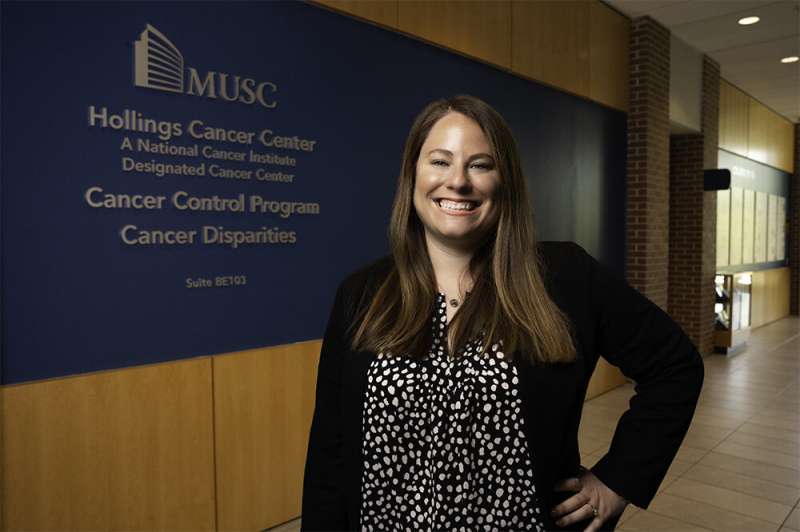Q&A: More evidence needed to confirm promise of remote or decentralized trials


There’s one question that Hollings Cancer Center researcher Jennifer Dahne, Ph.D., co-director of the remote and virtual trials program at the South Carolina Clinical & Translational Research Institute, hears more than any other as she consults with clinical researchers about how to set up remote trials, also known as decentralized trials.
Will these trials overcome the barriers that make it difficult for minority and underserved populations to participate in clinical trials? It’s also a question she often discusses with her peers at other academic medical centers that are also home to Clinical and Translational Science Award hubs.
Dahne thinks it’s too soon to give a definitive answer to that question. She argues in a recent Journal of the American Medical Association Viewpoint article and in the following Q&A that rigorous evidence is lacking as to how these trials affect the diversity of clinical trial enrollment.
Q: Can you describe what a decentralized trial is?
A: Decentralized trials bring clinical research opportunities to participants where they are rather than bringing participants to clinical trial sites, as in the traditional model. This approach aims to improve access to clinical trials and to make it easier for patients to participate in them.
Q: What excites you most about a decentralized approach to trials?
A: Like many others, I believe this approach has promise for making our trials more accessible to populations of patients or research participants who typically wouldn’t participate. We know that there are disparities between who enrolls in our clinical trials and who is burdened by the diseases that we study. The potential to make our trials more accessible, and by extension improve the generalizability of our results, is the thing that really excites me the most.
Q: What advice would you give to researchers eager to make decentralized trials the cornerstone of their clinical trial diversity initiatives?
A: We assume that pivoting to decentralized trials will increase access to clinical research for minority and underserved populations, but we need to take a critical look at the methods and procedures of these trials and see if they are having the desired effect.
Although these trials may overcome geographic barriers, they may come with their own unique barriers.
For example, Black and Hispanic people have considerably lower rates of home broadband internet access than White people in the U.S., and there is also a clear association between annual household income and home broadband internet. Likewise, only 61% of adults 65 and older own smartphones as compared to 95% of those between the ages of 30 and 49, perhaps making it more difficult for them to participate in these trials. Older adults might also have dexterity or perceptual issues, such as vision or hearing impairment. Those could also be major barriers to participating in trials that require regular use of technology.
It is also possible that this type of trial design could worsen other known barriers to participating in clinical research, such as mistrust of academic institutions and of clinical research. What is the impact of a shift to these methods on trusting academic research? With less direct contact between participants and researchers, would clinical researchers have fewer opportunities to dispel that mistrust? And how does that differ across various patient populations? We just don’t know yet.
We’ve learned in many other areas of medicine how costly it can be to roll back interventions when we realize they are not having the intended effect. Now that the COVID-19 pandemic is waning, we have the opportunity to be very thoughtful about how we move forward with remote trials to avoid such a costly mistake—one that can’t easily be undone.
Q: How can we get definitive answers?
A: We need rigorous randomized controlled trials that compare traditional in-person clinical trial methods to decentralized trial methods. It will be important to evaluate the impact of these different types of clinical trial methods on trial enrollment across various patient demographic groups as well as on other aspects of the clinical trial pipeline.
What is the pace of enrollment? What about the cost of the study? What about the validity of the data that’s collected? It will be important to have these rigorous randomized controlled trials to answer questions about the impact of this new approach across every step of the clinical trial pipeline.
The National Center for Advancing Translational Science recently issued a request for information to get input on critical issues around decentralized trials. My hope is that there will be increased interest and a push, particularly from funding agencies, to answer these sorts of questions.
More information:
Jennifer Dahne et al, Health Equity and Decentralized Trials, JAMA (2023). DOI: 10.1001/jama.2023.6982
Journal information:
Journal of the American Medical Association
Source: Read Full Article